The Artist Struggle – From Rejection to Success

Economic reality is the main reason why many talented artists do not pursue their passion. As what Abraham Maslow famously pointed out in his concept of the hierarchy of needs, the physiological needs such as the need for food and shelter are more fundamental than the needs for self-actualization. Most people, including budding artists, have to first satisfy their basic needs before they could realistically pursue art as a career path. Pursuing art is a higher need but unfortunately, it does not pay the bill in most cases. The successful multi-millionaire artists are more of exceptions to the common rule. In fact, the truly successful ones are more of anomalies than part of the general pattern.
It might be true that there are many artists like painters and musicians who derive their regular income from their crafts but only to certain extent. What they create are commercial arts that most of them would not even be proud to call their own. For instance, many talented writers become gho...
New Watercolor Brushes for Photoshop

If you are an artist or graphic designer, you probably experimented on the various features of Photoshop in creating your artworks and designs. You might also have tried to replicate various painting or drawing styles in Photoshop. You may have tried touching up a photograph of a classic artwork or a painting that you have done yourself. Discovering new ways to digitally replicate the visual characteristics of physical objects or images could be challenging. Even the seemingly simple watercolor effect is relatively hard to replicate in Photoshop if you are not skillful or knowledgeable enough. The watercolor effect is something that is relatively hard to accomplish without proper plugins.
Even if you are experienced and skilled in using Photoshop, you probably resorted to experimenting on different image filters, wet edges brush setting, overlaid textures, and other similar effects just to approximate the visual style of an actual watercolor painting. Finding ways to combine the vario...
Correctly Using the Dynamesh and ZRemesher Options of ZBrush

Newbie graphic artists and game graphic developers who are still exploring the many possibilities of ZBrush tend to incorrectly use its many features. They may still get the results that they intended but these would not be efficient manner. Knowing how to effectively use the options would allow the designers to create models more intricately. Efficiency in sculpting models will also be achieved, thereby minimizing the time and effort that are invested on a project. Designers could achieve more. The Dynamesh and ZRemesher options of ZBrush are among the features that are oftentimes used in the wrong manner by newbie users.
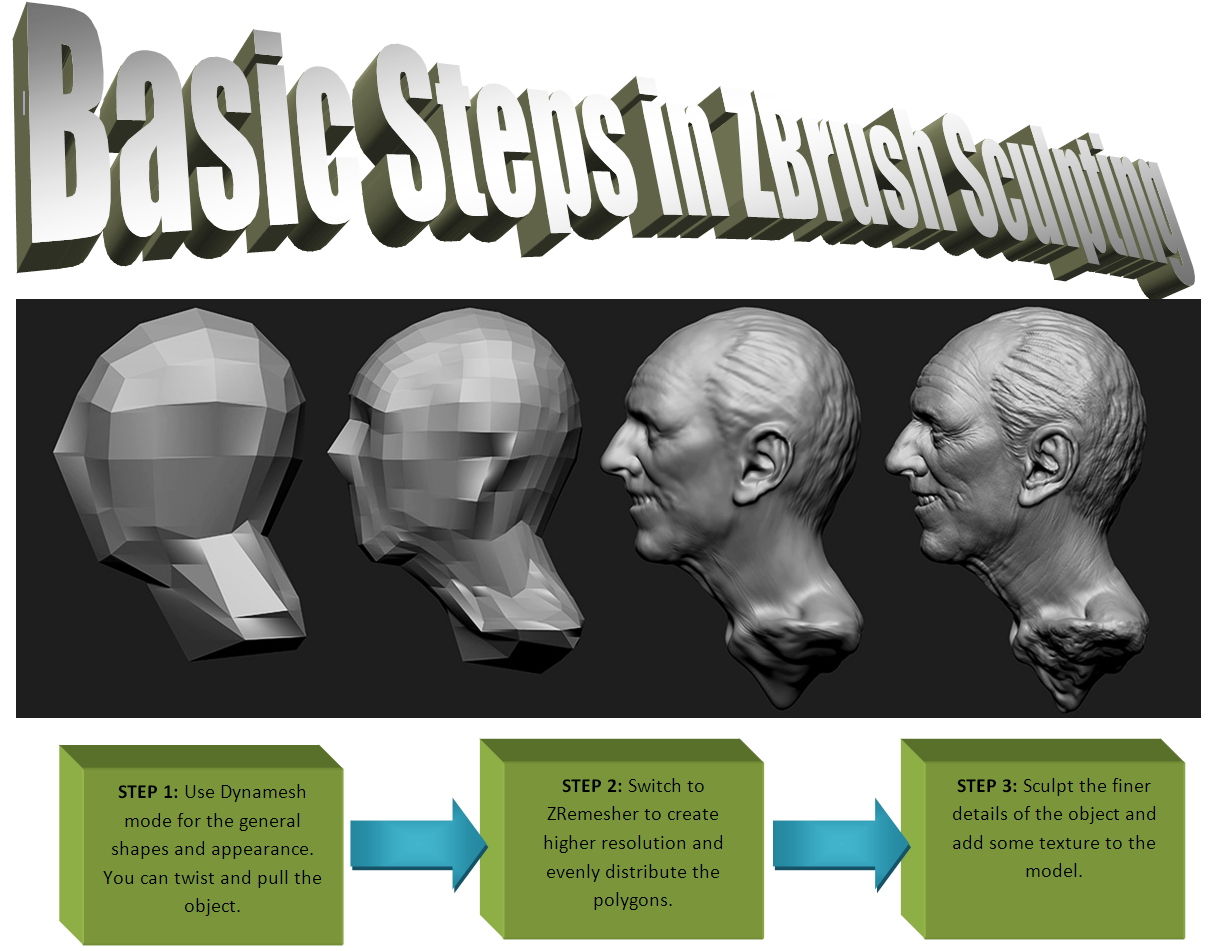
Many newbie users seem to think that the differences among Dynamesh, ZRemesher and sculpting using division are foggy at best. However, this assumption is too simplistic to be true. There are several significant differences and knowing these differences will not only save time and effort but would also lead to better designs. Regardless of artistic talents, having...
The Ring to Rule Them All – Update on the 'Ring Master v1.3’ Unofficial ZPlugin

Creating intricate ring designs using the previous versions of the Ring Master plugin is also equally intricate and tedious. It seemed that you needed to learn other trades like metal work just to have the right feel about manipulating the mandrel template base of the rings. The newest version of the plugin allows you to create intricate patterns in a more efficient manner, namely, by applying masks. You can also easily adjust the diameter, thickness and other values of the rings in a more straightforward manner rather than going through many hoops, so-to-speak. You can also add more intricate topology details, allowing you to sculpt the texture more effectively.
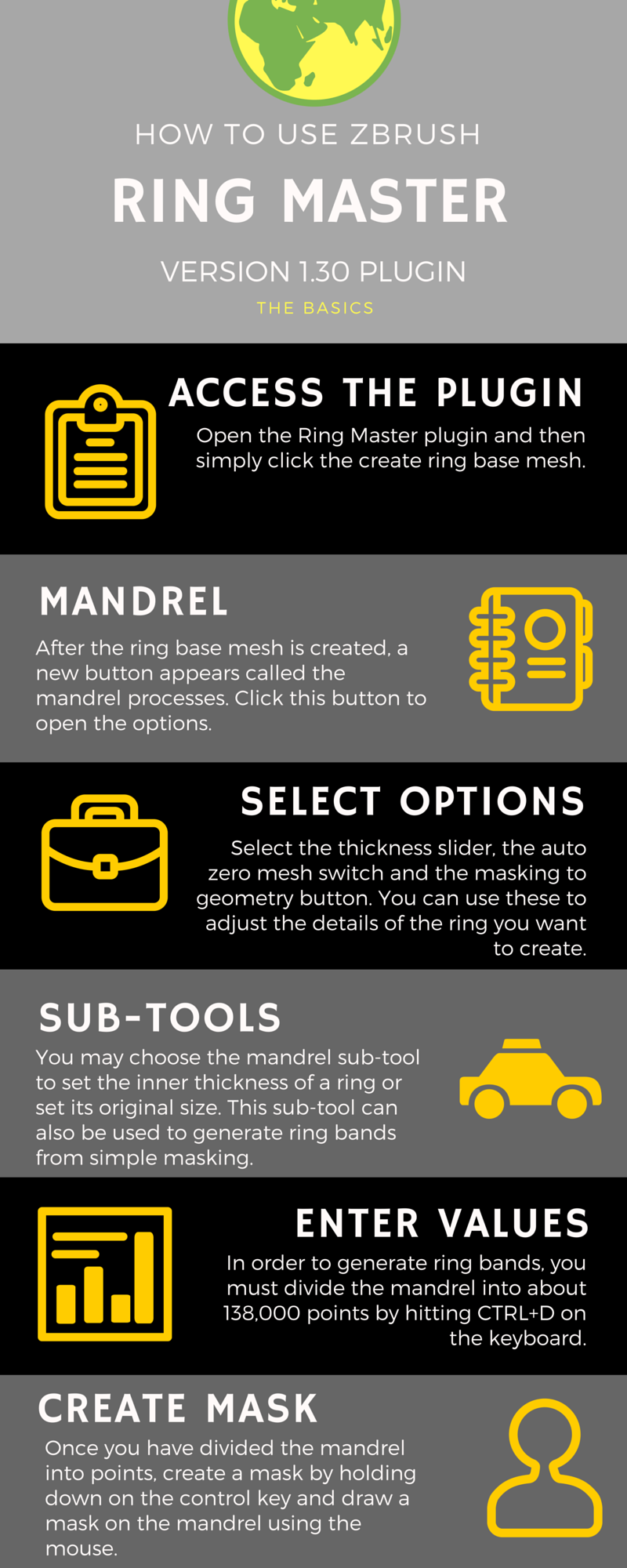
You need to buy the Ring Master plugin but the latest update is free. The plugin is simple and straightforward that even new used of ZBrush could easily understand it. Basically, the plugin and updates allow you to create intricate ring band designs from bare mandrels by using the masking options and setting the thickness. Th...
Using the 'PanelLoop Presets v1.0' Plugin

Using ZBrush to create realistic gaming or movie characters requires technical skills and artistic talents. Some people only have one of these factors but having the artistic talent is absolutely necessary. The technical skills can simply be developed later. Sculpting a digital image in Zbrush is not as straightforward as sculpting a real three-dimensional object. Manipulating a digital object using ZBrush requires not only knowledge about the tools and presets but also about the necessary plugins. Without these plugins, some tasks are either impossible to do or very difficult to accomplish. The 'PanelLoop Presets v1.0' is an unofficial Zbrush plugin that has been recently released and it is primarily for rendering and manipulating panel loops.
Installing the 'PanelLoop Presets v1.0' plugin will allow you to store multiple panel loop presets. Once installed, it is easy to access from the plugin dropdown menu. Simply click the panel loop preset button. It has its own presets that you c...
Rarity of Artistic Motivation

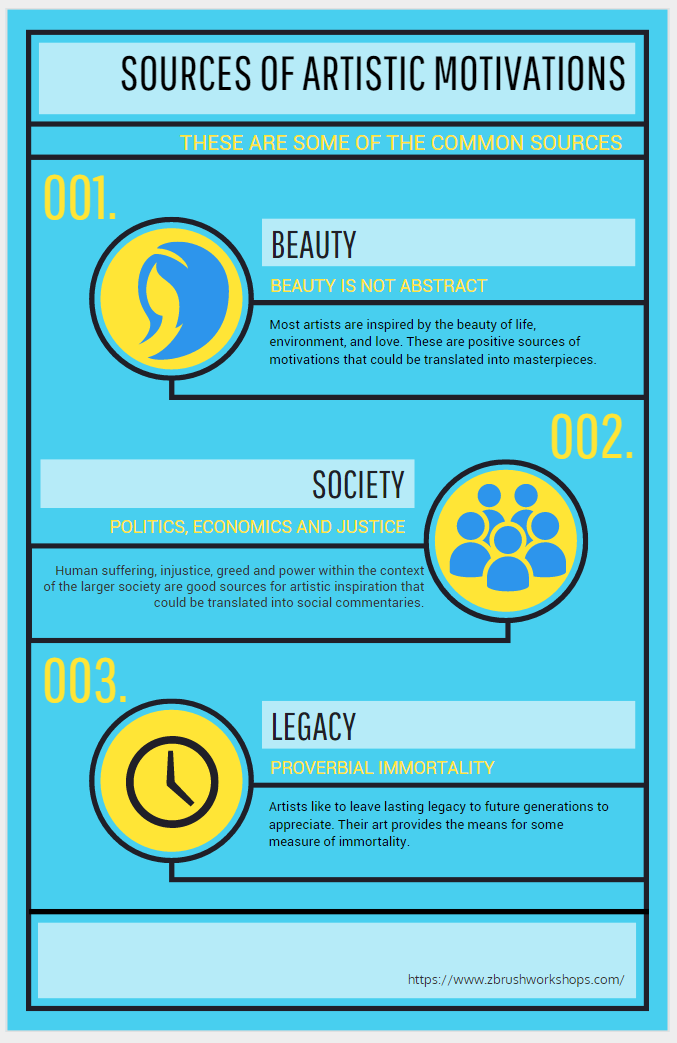
Creativity requires inspiration but inspiration is something that is rare. Artistic motivation is not as simple as having the prospect of getting paid for an artwork or having the opportunity to have an exhibit in a well-known gallery. Artistic inspiration is not directly connected to the need for material things, fame or financial stability. Ironically, many artists are at their most creative when they are experiencing human suffering such as being destitute, feeling rejected or losing a loved one.
The image of a suffering and hungry artist is stereotypical but many artists derive their inspiration from existential angst. This is not to say that most artists are somewhat sadomasochistic. The artistic talents of Vincent van Gogh, Ludwig van Beethoven, Francisco Goya and Ernest Hemingway are rare but they typify the tortured artist stereotype.
Suffering, whether psychological like depression or something physical, is a rare source of artistic motivation. The works produced from this...
The Downside of Over-Thinking Things

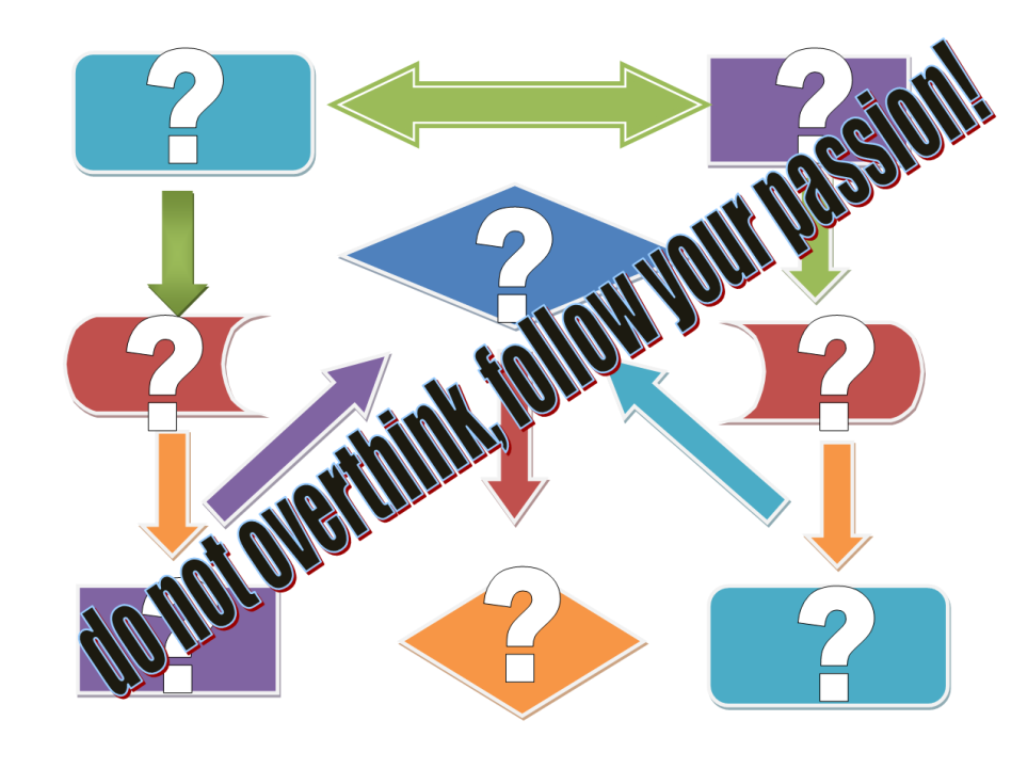
Only a handful of people has frequent epiphanies or light bulb flashing over their heads. Again, fewer of those who get brilliant inspirations actually translate their ideas into reality or at least into a workable prototype. Many potentially great ideas are lost forever because the people who conceptualized them are either not motivated enough to act on their ideas or they have over-analyzed their ideas. Self-criticisms and objective analyses of ideas are good and helpful but there is such as a thing as “analysis-paralysis.” It is a situation wherein little to no decision or action is made because of over-thinking the various aspects of solving a problem.
Analysis-paralysis is more common than most people would think. Some situations could be as subtle and mundane as choosing which cloth to wear or to which restaurant to dine-in. Aside from wasting time and annoying other people, mundane cases of analysis-paralysis do not have serious and long-lasting effects. However, analysis-par...
VIDEO SUMMARY: The Anatomy of Translating an Idea into Reality

Video link: https://www.facebook.com/ryan.kingslien/videos/1775023712716212/
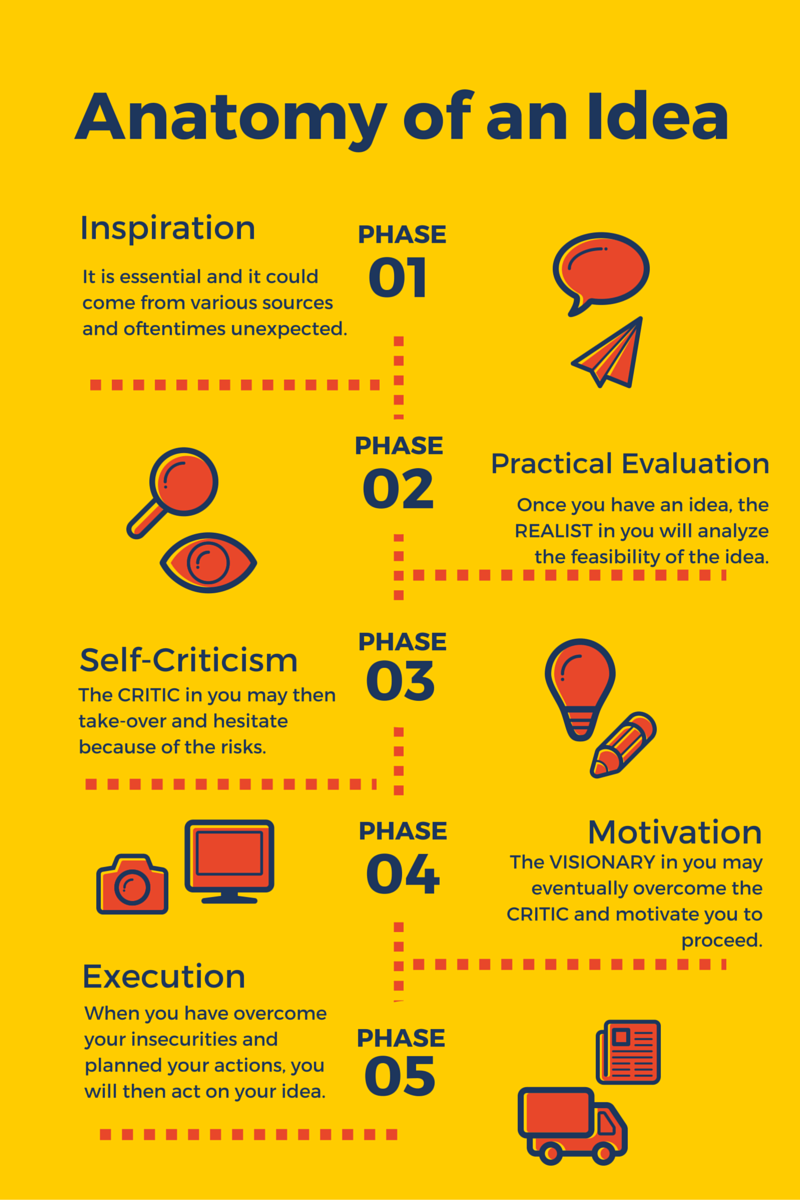 Improving or unlocking the artist in you may take several steps. It all begins with the understanding of the competing voices inside you. It also involves understanding how a creative idea could be translated into reality. This is the basic anatomy of the creative process and it applies not only to traditional arts like painting or sculpting but also to other endeavors that require creativity like a business. Art is about creating new things that never existed before. When you are inspired and conceptualized an idea, the more important thing to consider is what happens next. In this video, you will learn key concepts in how you will be able to translate your ideas into reality. It could be any creative idea like a software application, a business or an artwork.
Improving or unlocking the artist in you may take several steps. It all begins with the understanding of the competing voices inside you. It also involves understanding how a creative idea could be translated into reality. This is the basic anatomy of the creative process and it applies not only to traditional arts like painting or sculpting but also to other endeavors that require creativity like a business. Art is about creating new things that never existed before. When you are inspired and conceptualized an idea, the more important thing to consider is what happens next. In this video, you will learn key concepts in how you will be able to translate your ideas into reality. It could be any creative idea like a software application, a business or an artwork.
Possible Questions
There are several possible questions that you might ask yourself once you get an idea. These questions will provide you some guid...
Judge Yourself By Your Own Graph

Judge Yourself By Your Own Graph NOT Others!
Posted by Ryan Kingslien on Monday, June 6, 2016
How often do we look at someone else's art work and think, "Why is their work so much better than mine?"
It's easy to do, right? When we look at someone else's work we see the end result of their work. We don't always see the struggles, the WORK that it took to get the peice created.
On the other hand, we see ALL of our struggles and ALL of our work...
However, it goes deeper than just, "The grass is greener..."
I believe the problem comes from one fundamental mistake: we see talent as a LINEAR equation.
I do X then I will get Y. If I work 10,000 hours I will finally be a master. If I put in two weeks of time then I'll be able to finally sculpt a face...
But this is a mistake. It's a beginner's mistake, in fact, because anyone who has been doing the work for more than a few years knows that some days we have the talent and some days we just don't.
Some days we are a god. Some d...
Stop Thinking Yourself Out Of It!

The other day I was thinking about my work and I just wasn't happy. I began to wonder, is it good enough? Who will like it? Why would anyone like it... and my brain just went into a tailspin...
Until, that is, I put my hands on clay and just started working...
Once I had my hands on clay I stopped caring what other people thought. I stopped wondering about my work and I was just glad that I was sculpting. I was just excited to be working.
Later, it occured to me that there are two different modes that we can be in as artists: our thinking mode or our feeling mode.
When we have our rational cap on we can ask questions like "Is it good enough?" When we have our feeling cap on, however, we change that questions from "am I good enough?" to "How can I make this happen? What do I need to do to achieve this?"
And there is a universe of difference between those two ways of thinking, isn't there?
So, my question to you is, is there an area of your art that you've been very critical o...
